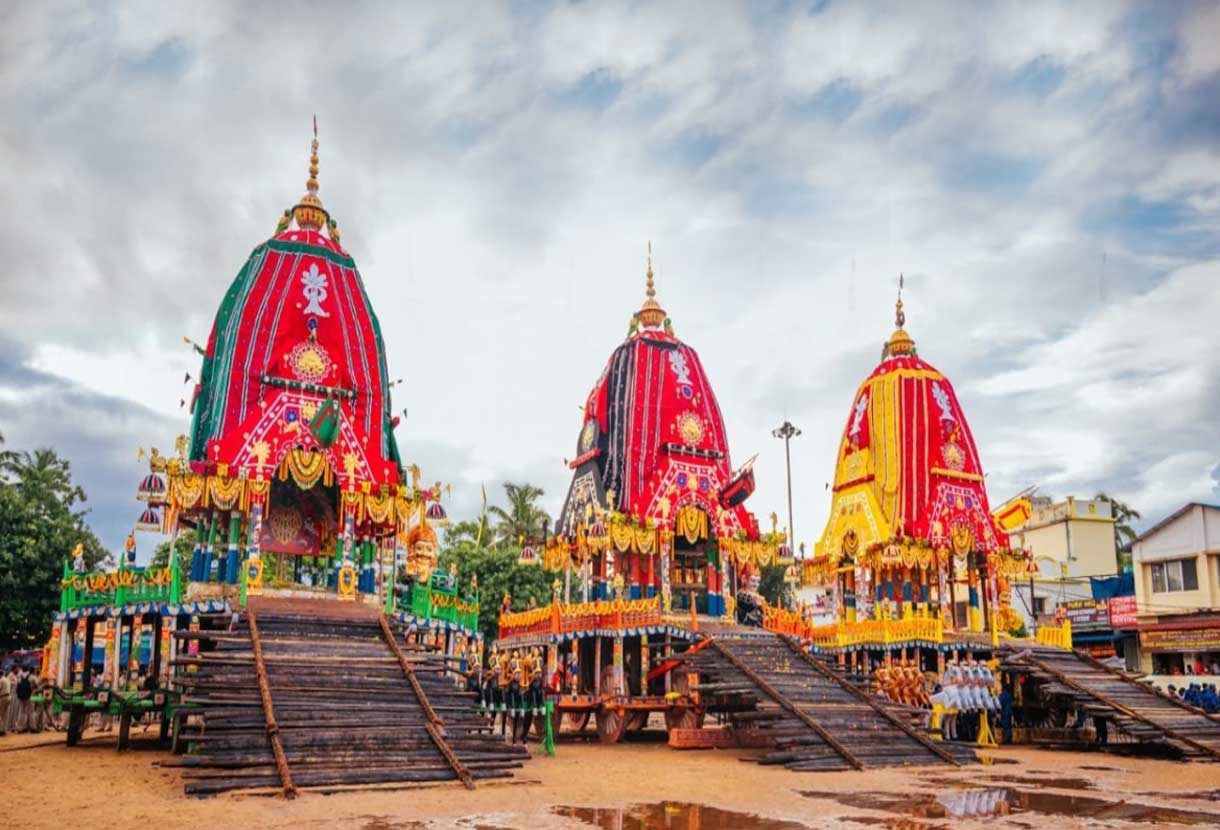Bahuda Yatra is a grand festival of epic dimensions and a prominent religious occasion that holds special significance in the legendary traditions and cultural fervor of Odisha, India. This festival marks the final ritual of the Rath Yatra, when Lord Jagannath, Lord Balabhadra, and Devi Subhadra are taken back from their aunt’s house (Gundicha Temple) to the main Jagannath Temple. Beyond its visual magnificence, Bahuda Yatra is deeply rooted in historical traditions, spiritual emotions, and cultural pride among the people of Odisha.
This blog delves into the Bahuda Yatra legend, its cultural and religious significance, and how it became one of the most celebrated festivals in India.
The Origins of Bahuda Yatra
The roots of Bahuda Yatra are deeply embedded in Hindu mythology and religious texts that recount the tale of Lord Jagannath, the supreme god of the historic Jagannath Temple of Puri. It is believed that the festival marks the annual visit of the deities to Gundicha Temple, passing through another temple at the opposite end of the city, known as Mausi Maa Temple, where they stay for nine days before returning to their original temple. This return journey is known as Bahuda Yatra, which literally means “journey to the home.”
Connections to the Rath Yatra
Rath Yatra signifies the first round of the divine journey, where the three deities are placed in grand chariots and moved in exuberantly decorated raths (chariots) from the Jagannath Temple to the Gundicha Temple, located about 3 km away. The Gundicha Temple is considered the residence of Lord Jagannath’s aunt, where the deities stay for seven days and are offered food during their visit.
After nine days of prayers and joyous celebrations at Gundicha Temple, the deities begin their return journey, known as Bahuda Yatra. This journey not only symbolizes the homecoming of the gods but also reflects a larger theme of renewal and the spiritual return of the devotees.
Mythological Significance
The stories associated with Bahuda Yatra are rich in symbolism and reflect the religious history of the event. A popular legend ascribes this journey to the gods’ attempt to confer their blessings upon everyone, including those who otherwise could not enter the sanctum sanctorum of the Puri Jagannath Temple. As the deities are paraded through the streets in grand chariots, they make their presence felt and are believed to bless their devotees, making it one of the world’s most extensive and significant divine festivals.
Bahuda Yatra: Cultural and Spiritual Significance
Bahuda Yatra extends beyond its religious scope and serves as a cultural symbol of Odisha. The festival brings together thousands of devotees, pilgrims, and tourists from all over the world, who come to witness and be a part of this magnificent celebration.
A key feature of the Bahuda Yatra is the execution of ancient rites and customs, which are meticulously followed every year. The chariots are built anew each year from specific types of wood and covered with canvas, which is hand-painted by expert signwriters. Thousands of craftsmen, volunteers, and followers dedicate their time and energy to erect these chariots, ensuring the authenticity and devotion to tradition.
Another cultural highlight is the stop at Mausi Maa Temple during the return journey. Here, the deities are offered Poda Pitha, a traditional rice cake, which honors Odisha’s culinary heritage and reinforces the symbolic importance of familial bonds.
In the Spirit of Inclusivity and Community
One of the most striking aspects of Bahuda Yatra is the sense of community that it fosters. People from various religious backgrounds, faiths, and regions come together to pull the massive chariots back to the Jagannath Temple. This act is considered a symbolic expression of the devotees’ desire to remain in the presence of Lord Jagannath and feel his blessings firsthand.
The smooth conduct of such a large-scale festival involving thousands of priests, volunteers, and devotees highlights the hospitality and collaborative spirit of Odisha, making it a remarkable display of unity and devotion.
The Historical Evolution of Bahuda Yatra
The history of Bahuda Yatra can be traced back to the 12th century, when King Indradyumna is believed to have initiated the Rath Yatra and Bahuda Yatra to honor Lord Jagannath. Over the centuries, local kings and rulers have supported and patronized the festival, ensuring its growth into the grand spiritual event it is today.
Historical accounts, including those of the Chinese traveler Hiuen Tsang and the Venetian merchant Nicolo Conti, describe the festival’s enormous scale and the intense devotional fervor it evoked, drawing people from all walks of life to participate.
Modern Adaptations
In the modern era, the Bahuda Yatra has evolved to cater to a global audience. Advancements in infrastructure have made it easier for pilgrims and tourists to visit Puri. The event is now streamed live, allowing millions of people around the world to join in the celebrations virtually. Despite these modern twists, the authenticity and soul of the festival remain deeply rooted in tradition.
Efforts to promote Jagannath culture globally, including efforts to include the Rath Yatra-related traditions in UNESCO’s Intangible Cultural Heritage list, have broadened the festival’s appeal and attracted international attention.
The Pandemic Years
The COVID-19 pandemic posed significant challenges to the festival, as physical attendance was severely limited. However, the indomitable spirit of Bahuda Yatra shone brightly. A muted version of the festival was held, with all the rituals performed to perfection. Devotees participated from their homes, thanks to virtual streaming, spreading joy and spiritual energy across the world.
Relevance in Contemporary Times
Despite the world’s rapid modernization, Bahuda Yatra persists as a symbol of religious resilience and traditional identity. It serves as a reminder of ancient wisdom, emphasizing inclusivity, devotion, and the cycle of temporariness and eternity. The festival brings together humanity in faith and collective rejoicing, making it a cultural connector that bridges the past and the future, drawing millions toward the spiritual heart of Odisha.
Final Thoughts
The history of Bahuda Yatra is a testament to the enduring nature of faith and ritual. From its legendary origins to its contemporary grandeur, it remains a festival that leaves an indelible mark on those who experience it. Whether you are witnessing the spectacle on the crowded streets of Puri or participating virtually, Bahuda Yatra is a reminder of the beauty and unity found in community traditions. For first-timers, it’s the greatest spectacle of faith and art, while for the seasoned faithful, it remains a deeply personal homecoming—a return to the divine.






